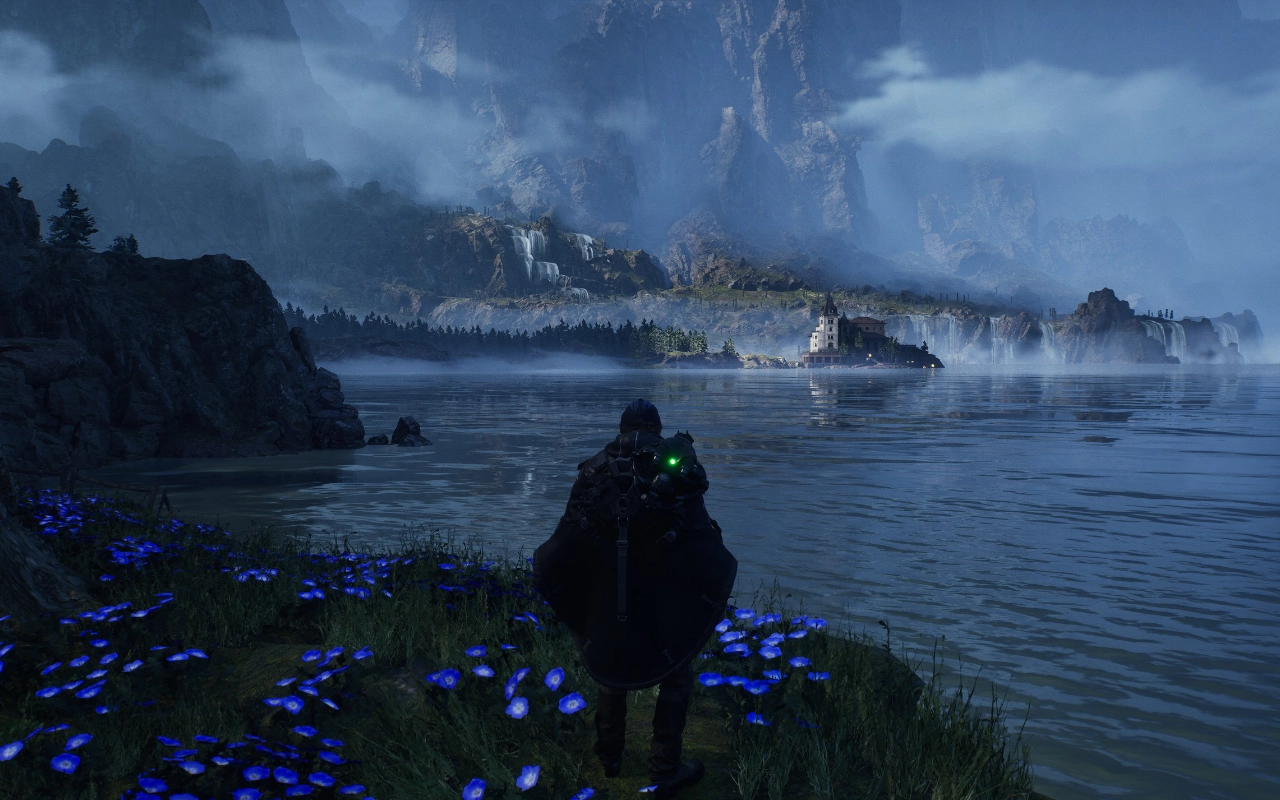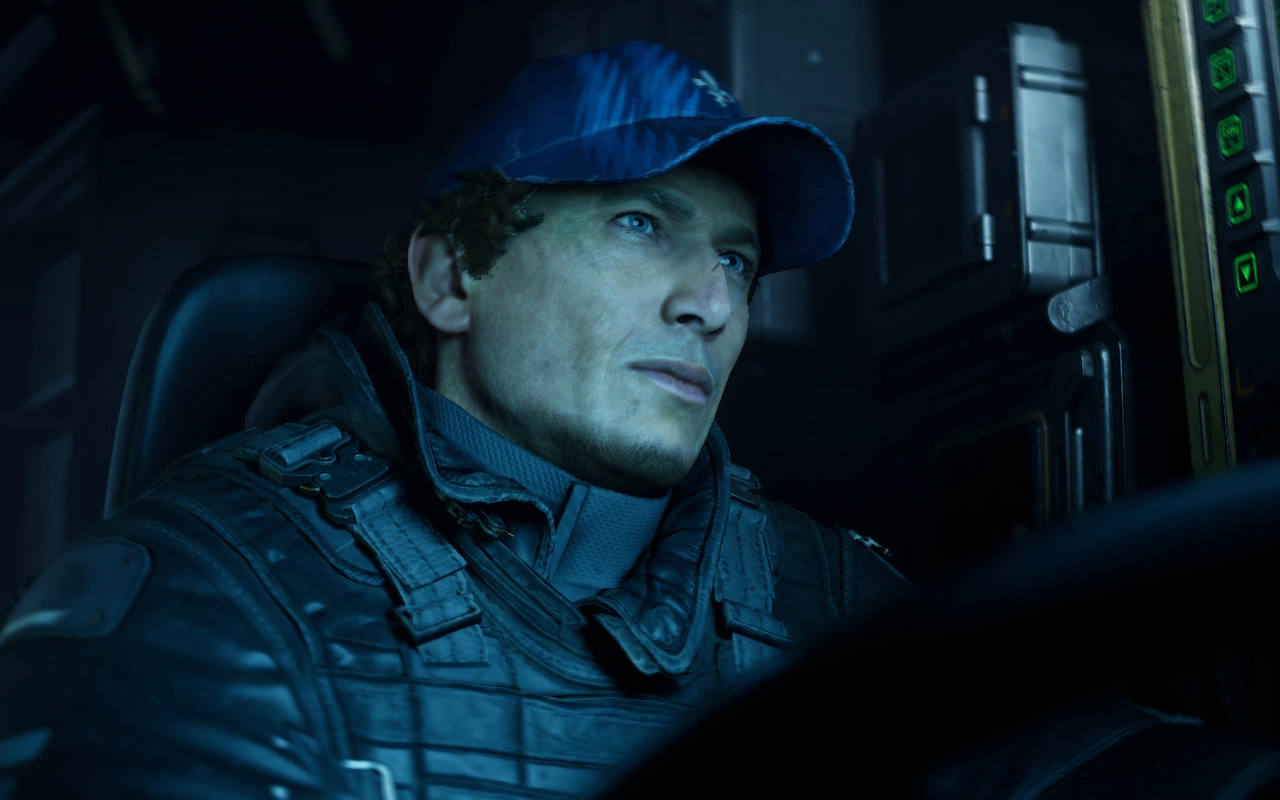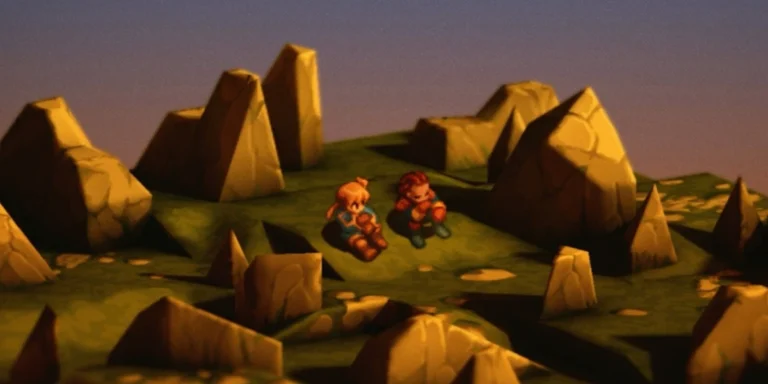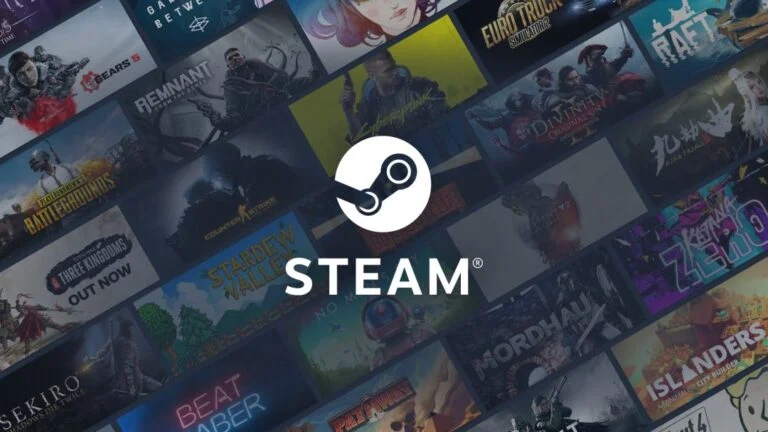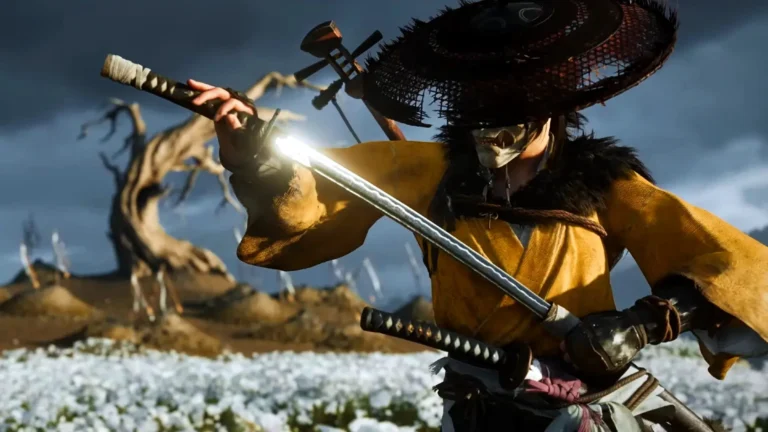On September 4th, 2025, Hollow Knight: Silksong released and promptly overshadowed all gaming discussion like a bug-shaped solar eclipse. A title so anticipated from memes and perpetual delays, its arrival crashed Steam servers and forced some competing games to delay their launch date as not compete with the insectoid terror. Yet with ironclad resolve, there was one game that stood its ground and refused to budge, looking Silksong dead in the eye saying “no, you move.”
Granted, it only got 4,000 players on launch day, but commendation is deserved nonetheless. That game is Hell is Us, developed by Rogue Factor and published by Nacon.

To describe Hell is Us in the cliche game journo way, it’s a soulslike by way of Death Stranding aesthetically. Set against the backdrop of a civil war in the fictional Eastern European country of Hadea, you play as Remi, voiced by Elias Toufexis. Seeking answers about his past, Remi discovers otherworldly creatures and phenomena have emerged across Hadea. As the game progresses, you fight your way through the monsters as Remi uncovers a conspiracy with tendrils reaching back through Hadea’s history. Help survivors, explore cities and ancient ruins, and solve puzzles as you try to save the country from a hellish calamity.
To paraphrase Joe Bob Briggs, sure we’ve played soulslikes before, but have we played them featuring gritty ethnic conflicts, emotion-based extra-dimensional entities, and a drone that can throw you at highway speeds? Does its emphasis on investigation help it stand out, or is it just another trend chaser? I decided to ignore Silksong to deliver you the answer. For reference, I played the game on balanced mode with a total playtime of 26 hours.
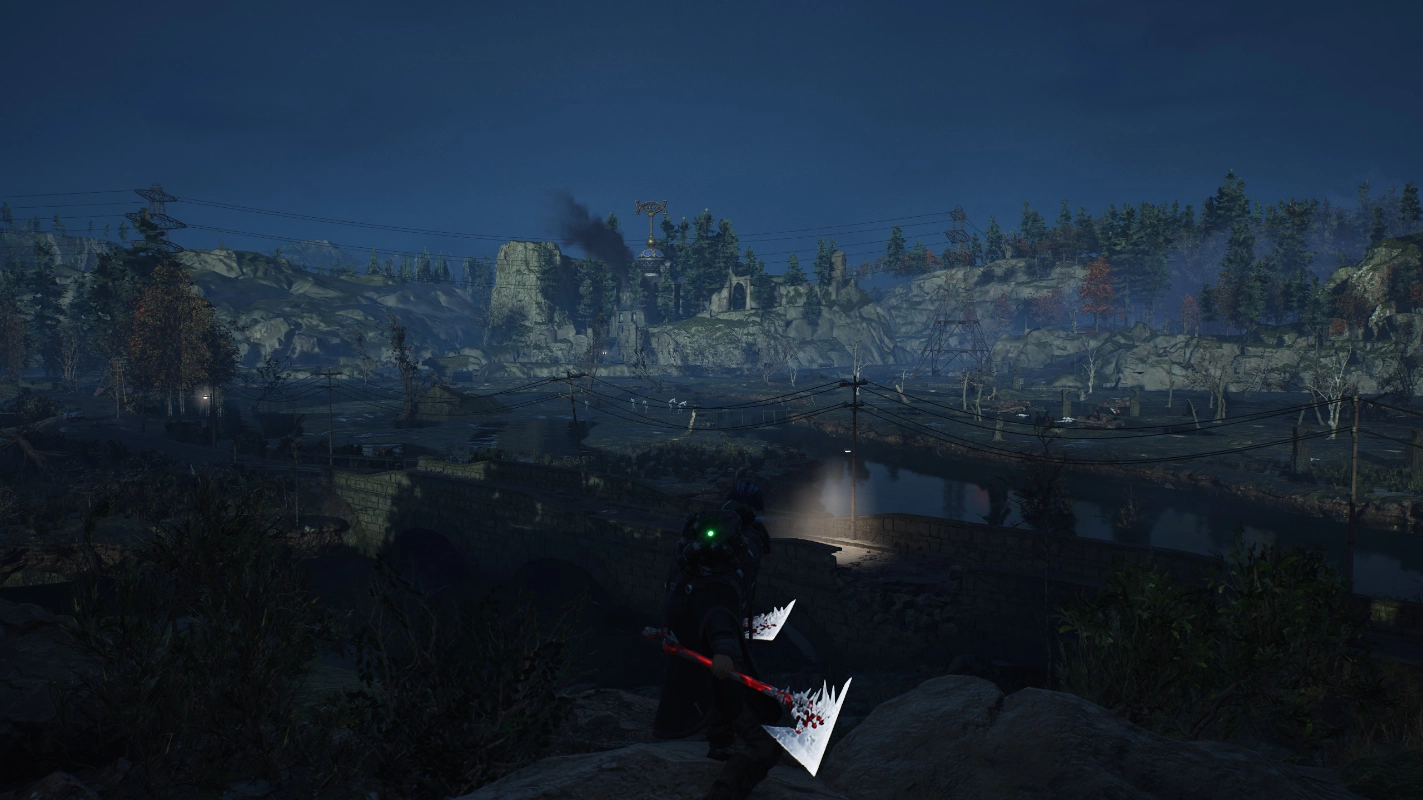
Dark Souls, but With a Drone
The soulslike comparison isn’t quite all-encompassing for Hell is Us. As expected, the basics of combat revolve around managing your health, stamina and showing off your proficiency in somersaults. Beyond that, the combat mechanics divert towards simplicity. There’s no stats to manage, leveling is done through weapon use, with health and stamina upgradable through defensive gear. Put simple, the more you use a weapon, the more you level it up. The upside is you can use the weapon you like without much opportunity cost. I spent most of my time with the dual axes to satiate the masculine need to become a Khorne Berzerker. I tried out most of the weapons available, and there didn’t seem to be any obvious downsides to them, so pick what you like and go nuts.
The main variation in your playstyle will come through your weapon runes and drone abilities. You select weapon runes based on what attunement you’ve given your weapon (think elemental effects in Souls games). Rage weapons can use rage runes, grief weapons can use grief runes, etc. Meanwhile, your drone has four ability slots swappable with different modules. Things like a gap-closer, a spin attack, plunging attack, etc. Over the course of the game you’ll find upgraded versions of drone abilities, and you can shorten cooldowns with consumables.
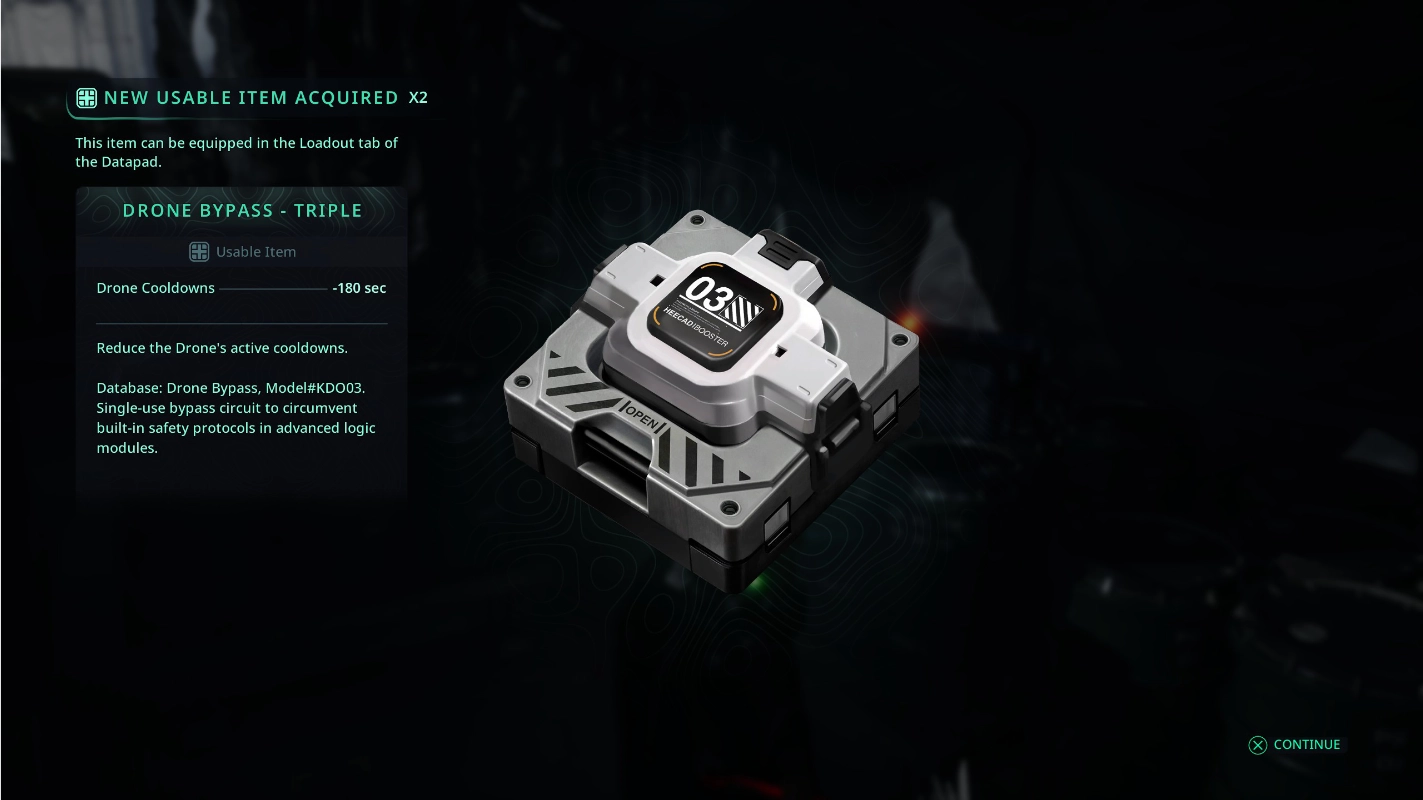
While I feel a deep and smoldering contempt for cooldown-based gameplay (*cough* FFXVI *cough*), Hell is Us mostly avoids this by tying your weapon runes to your Lymbic Energy (essentially your magic bar). Said bar was easy enough to refill in my playthrough, creating a positive feedback loop where the better you do in combat, the more Lymbic Energy you have to spend on runes. Sounds simple, but given cooldown-based abilities are an easy crutch for AAA games to lean on, Hell is Us provides a welcome relief. Further, the game has a Bloodborne-esque mechanic where you regain health by attacking enemies and timing a button press afterwards. It tilts combat towards a more aggressive playstyle that keeps hacking and slashing on the faster side.
By no means does Hell is Us have the most complex combat mechanics, they’re relatively simple. But the game provides enough options and customization to satisfy most playstyles, just don’t expect extensive build complexity. And chaining together drone abilities with runes lead to fun moments where I felt very satisfied with the combat. Sadly, the same can’t be said for encounter variety.
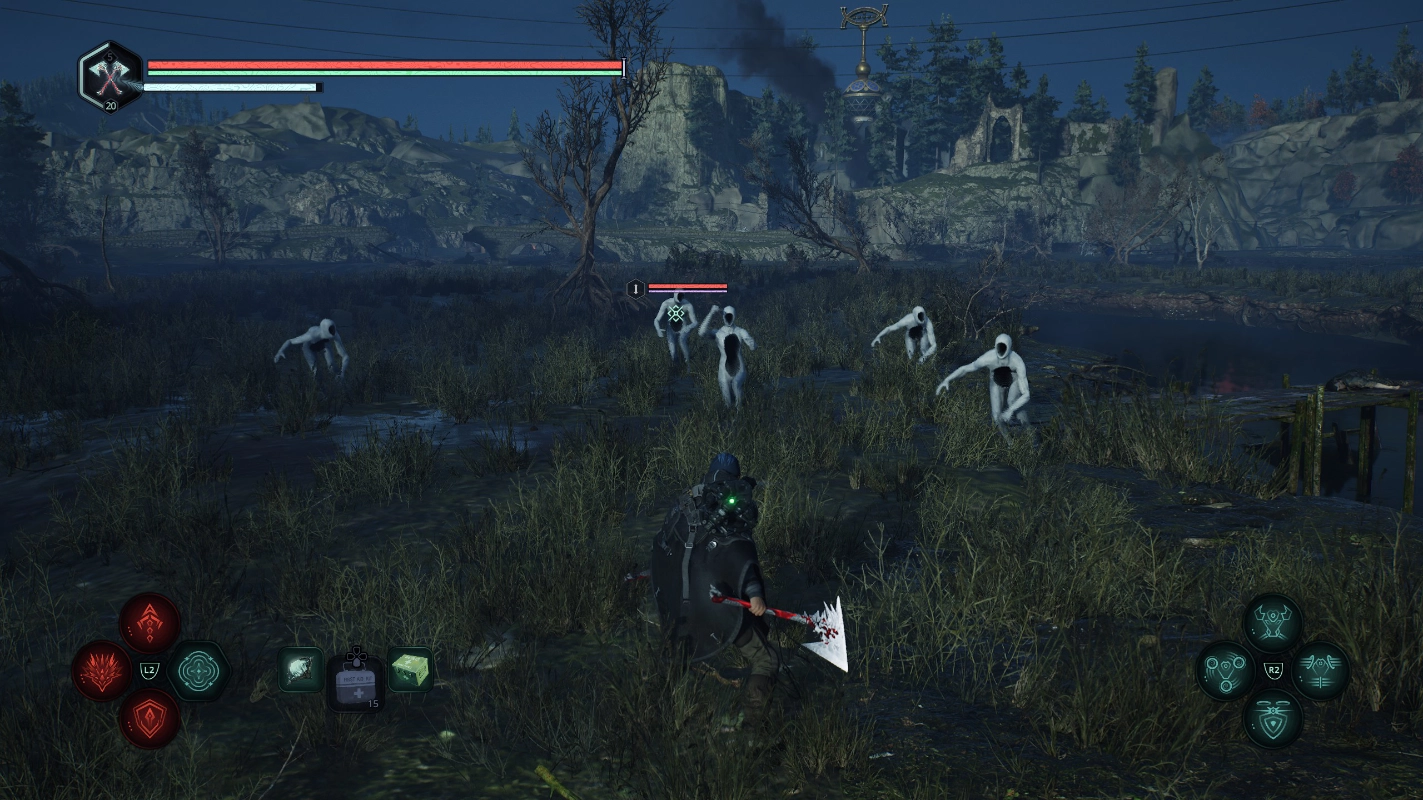
Hollow Walkers, Hollow Encounters
The Hollow Walkers are the pale, shambling humanoids you fight throughout the game. Moving in a jagged, stilted dance, they are normally idle until you draw close. In combat they burst with an unnatural speed as if they’re clipping through reality itself. Conceptually, I like the Hollow Walkers a lot. From an aesthetic and audio perspective, the enemy designers did an excellent job creating memorable monsters, from the Walkers’ physical forms to their inhuman shrieks. Especially impressive is their physicality; despite their very sudden movement patterns, I was able to comfortably read their telegraphs once I was deep into act two. Specialist types of Walkers are easily identifiable by their silhouette, and require a different approach. One can leave pools that drain Lymbic Energy, while one completely shuts down your drone until they’re slain.
While an individual Walker poses little risk, some have a Lymbic Entity attached. These entities are a maelstrom of raw emotion (ecstacy, grief, rage, or terror) in the form of floating geometric shapes emitting discordant screams. Again, the sound design on the enemies is quite good here, one could even say unsettling. While the mass of floating cubes and triangles may be hard to read initially, you can pick up on the telegraphs of the entities after a few encounters. In spite of the non-humanoid appearances, I got a good grasp on their attack patterns and could plan around them. As far as enemy design goes, I have nothing but positive things to say.
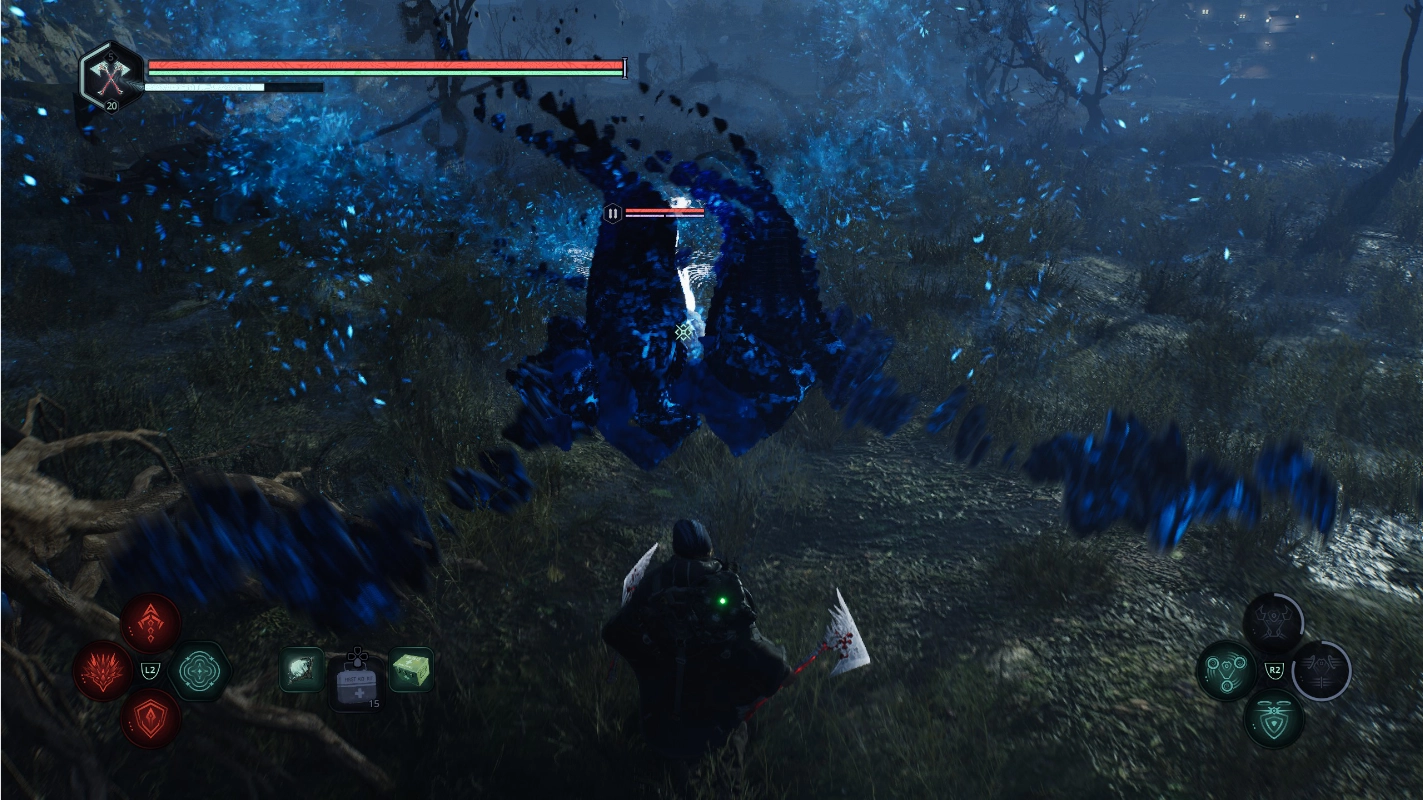
That said, what I was really missing from this game was more variety in individual encounters. By the time I hit the mid-game, individual Walkers posed little challenge, regardless of their level. Hitting max level on a weapon is not particularly hard and at that point you’ll make quick work of single enemies. Combined with some choice defensive gear, and even groups of enemies can be torn shreds with little resistance. Adding onto this lack of difficulty, refilling health from attacks meant I was carrying an ambulance’s worth of medkits by endgame. I found myself craving more of a challenge, and I wish Rogue Factor had been more punishing in the game’s encounter design.
The best fights were ones where multiple level three specialist Walkers were chained to one, or even two, Lymbic Entities. Those encounters force you to consider your approach, stay on top of cooldowns, and take out enemies in a priority order. In those I felt the combat mechanics really came together, and dealing with single enemies afterwards felt like a slog. Not helping were several encounters that were just a horde of basic Walkers. I also wish there were more boss fights, though I at least enjoyed the spectacle of the few there were. There were four during the act three, but the finale of the game felt relatively short, surprisingly so.
Ultimately, there’s nothing wrong with the core combat mechanics in Hell is Us, but there is some noticeable missed potential. Perhaps the higher difficulty provides the challenge that I was looking for, provided it mixes up enemy groups. I would say any soulslike veteran looking for more intense combat should probably start on the hard difficulty to make the most out of their experience. Fortunately, combat isn’t the only pillar the gameplay rests on.
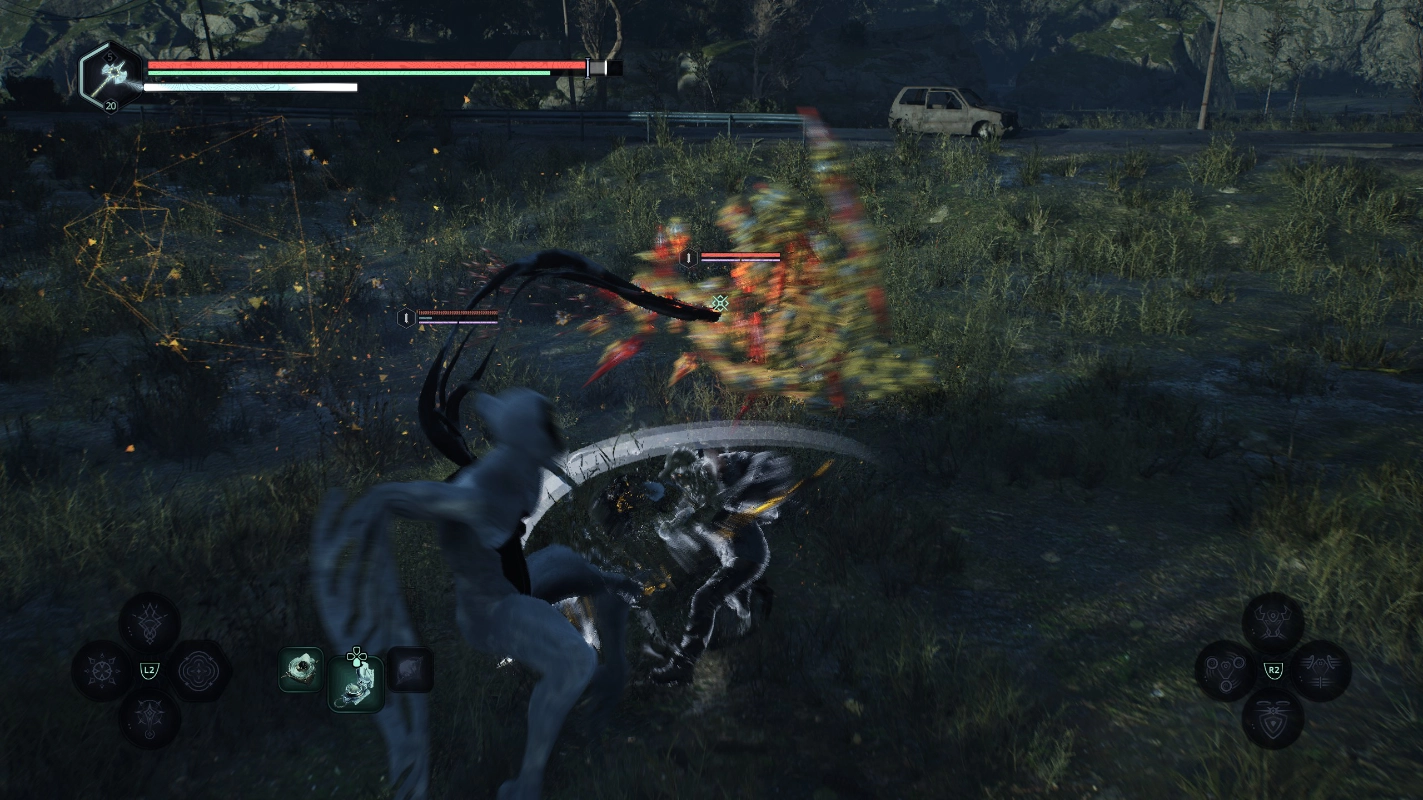
Hope You Brought a Notepad
Equally as important as combat are the investigation mechanics. Much of the game’s marketing revolved around the promise there would be no hand-holding in quests. No mini-map, no objective markers, no automatically entered codes. Hell is Us wants you to be taking notes and figuring out the game’s many puzzles on your own. Low-IQ gamers and those with short attention spans beware.
To be fair, the game doesn’t quite throw you into the deep end. Every note and relic you pick up is cataloged in your inventory under a few different tabs, so you don’t necessarily need to take notes on everything you come across. You still need to manually search your inventory and read things carefully if you want to solve puzzles though. Having a notepad on hand helps to speed things along, unless you have a photographic memory or like swapping between menus. The rest of us will have to make do with pen and paper.
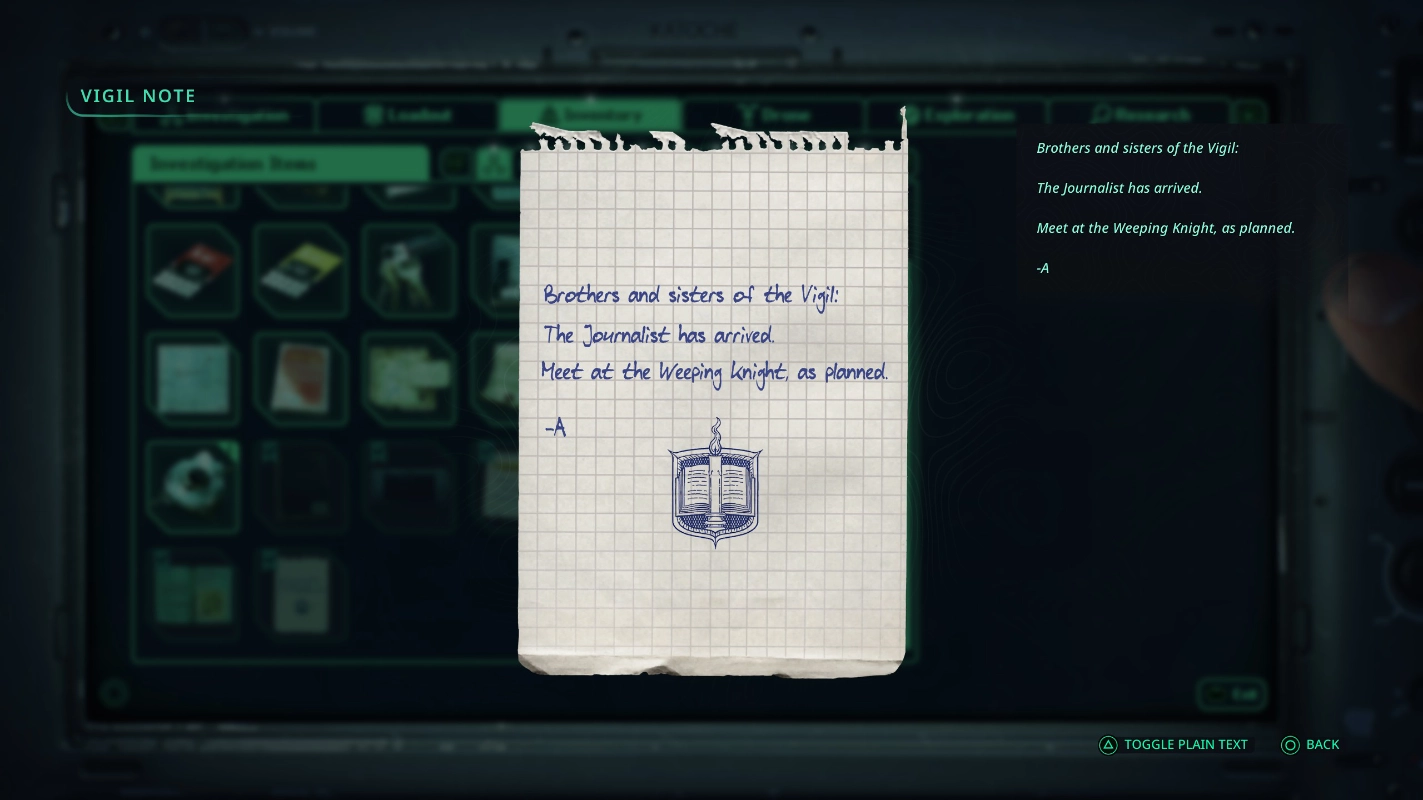
Hell is Us also has tabs where you can check up on the game’s version of quests: mainly investigations, mysteries, and good deeds. Investigations are related to the main story and offer the most immediate guidance on what to do next. Mysteries are environmental puzzles which lead to hidden caches and treasure. Good deeds require you to pay attention to the various NPCs and try to find an object they’re looking for. Some of these deeds are locked to each act, so try to stay on top of them. One NPC I thought I had the whole game to help was not so lucky. I returned to the starting village to find him… well let’s just say ‘hanging around.’
The puzzles in the game are mainly based around note-taking and context clues. You’ll be given a puzzle in one area and need to gather items from the level to find the solution. Evaluating puzzles can be tricky when reviewing a game, mostly because the writer can be afraid to out themselves as being on the lower end of the IQ bell curve. I will say this about the puzzles in Hell is Us—if I was ever stuck, reviewing all of my notes line-by-line allowed me to figure out the solution. I believe that’s a good marker for well-designed puzzles. This is a game that really asks that you take your time, and don’t rush through the experience.

Of course, to get clues you need to traverse the levels, which you travel between in your APC. The devs wisely decided to give Remi infinite sprint outside of combat. Additionally, levels are compact enough that it doesn’t take too long to get from one end to the other. That said, I don’t think it would have hurt the experience to allow fast travel between different save points, especially if you’ve already shut down a timeloop. Timeloops are what spawn the Walkers in each level, and you can close one permanently if you have amine prisms. Even so, when I returned to a level to solve a mystery, walker encounters weren’t a challenge at that point and running to the site of a puzzle or mystery was a chore. While I respect the Rogue Factor’s intent to limit convenience, I think fast-travel would be welcome addition to the game.
But ultimately, I did enjoy the puzzles. They feel like they reward paying attention, exploring as much as you can, and taking notes. If exploration is up your ally, I think Hell is Us has something for you.
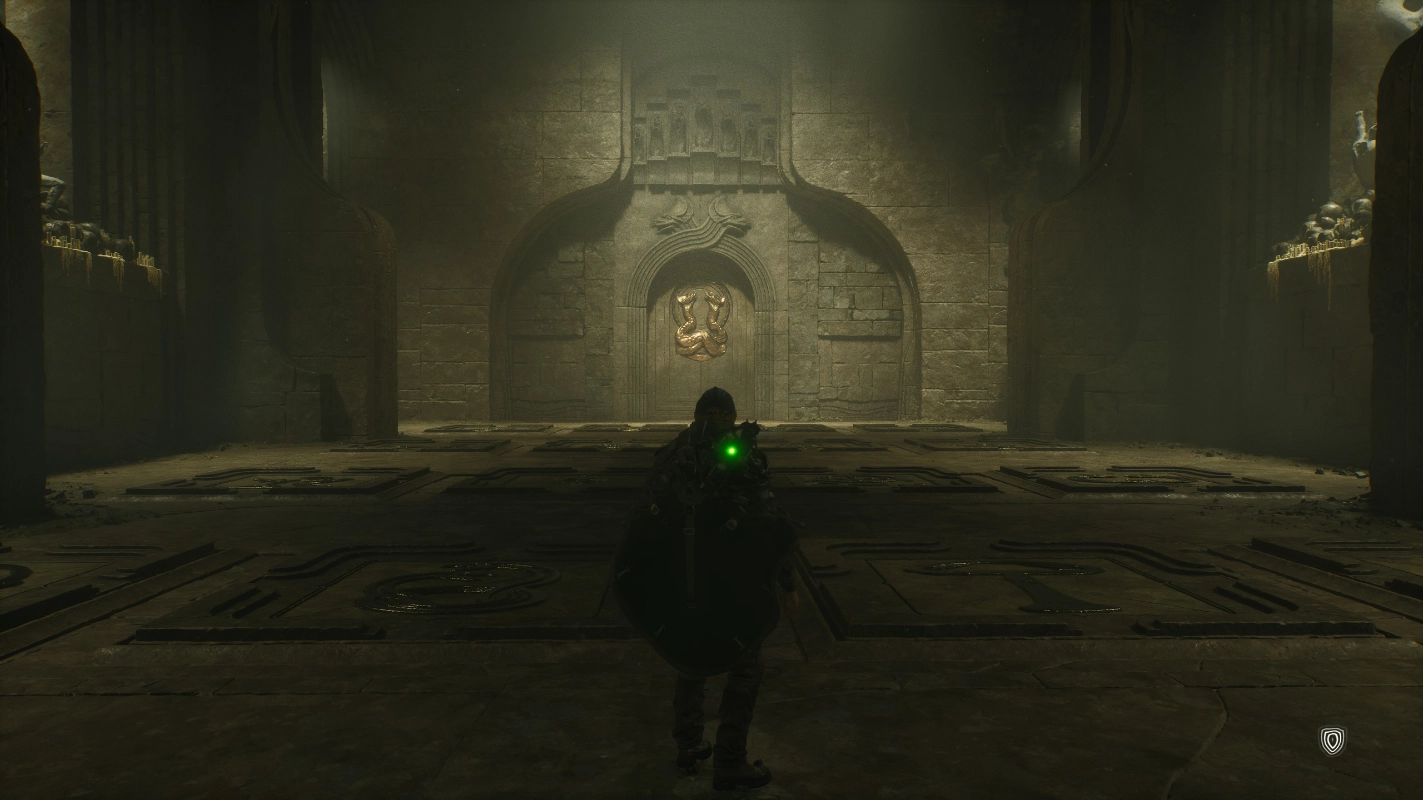
War is Hell
Though the world and events of Hadea may be fictional, it’s not hard to find parallels to real-world counterparts. If I say, “the Balkans” or “Serbia,” many readers probably have a notion of the grim, vicious ethnic conflicts that raged across parts of Europe in the latter half of the twentieth century. And for those readers who studied on those conflicts, you know just how horrifying things truly were. Using those events as a source of inspiration for a game is a tricky proposition, requiring a balance to not fall into insensitivity or tastelessness.
The horrors of the Hadean Civil War are presented in a blunt, unpretentious manner. Much of what Remi sees is long after the fighting has already finished. You get an inkling of things to come in the starting area, but it’s not until you hit the first village the brutality of civil war becomes apparent. Mass graves, lynchings, forced labor, and worse. While you never see these things as they happen, it doesn’t take much to conjure the images in your mind. Fair warning to those disturbed by such topics.

Accordingly, Remi encounters plenty of war criminals during the game, blatantly boasting about their atrocities. You aren’t able to attack NPCs, though truthfully I wondered if I could just dispose of them then and there. You can’t, but I don’t think Rogue Factor needs to add such a feature. Still, I was surprised that talking to these characters elicited a reaction in me. The two ethnic groups of Hadea, Palomists and Sabinians, have a long and bloody history between them. If you talk to characters from one faction, odds are they see their counterpart as barely even human. The rhetoric players are exposed to may seem absurdly over the top, but it’s not necessarily too far from how dehumanizing actual civil violence can get.
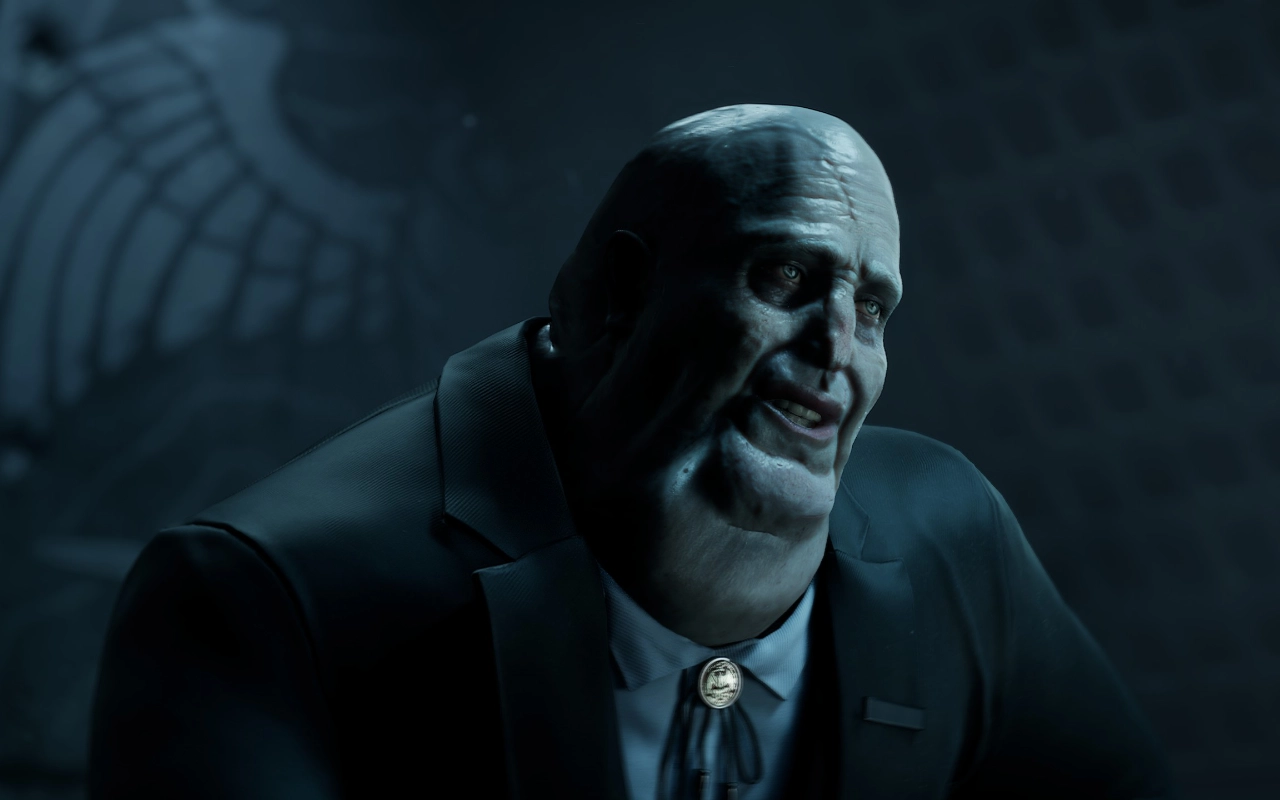
This is an aside, but perhaps the reason Remi doesn’t go butchering war criminals is because he’s a high-functioning sociopath. That’s not hyperbole, the game outright states it during a cutscene. I don’t know if Rogue Factor intended it, but I thought it was an interesting in-game rationale why you don’t have the freedom to kill any NPC. Or it might just be Remi is trying to stay incognito, or just the complexities of the game design. Pick your reason.
Much work went into the history of Hadea, and you learn about the country’s history from ancient times to modernity. Alongside the wars between Palomists and Sabinians are the Lymbic Invasions where the Hollow Walkers appeared en masse. On one side of the story is harrowing ethnic conflict, and on the other is eldritch horrors. As someone who generally prefers getting back to the action, I found myself getting into the history of Hadea. It’s interesting reading about secretive medieval societies mixed in with realpolitik of the late 20th century. Whether Rogue Factor sticks with Hadea as a setting or not, they should continue with this approach to lore.

Atmosphere and Some Technical Details
Moreso than exploration or combat, my favorite thing about this game was the atmosphere. While a few of the villages blend together visually, the levels do a great job of showcasing different areas of Hadea. The game takes you from urban warfare to medieval fortresses filled with eldritch horrors, and it all feels natural. One of the standouts for me was Lake Cynon, which serves as a refuge for several NPCs you encounter. But all the areas in the latter-half of act two all showcase very striking visuals, with a particular temple in the Plains of Mist coming to mind. Even if combat wasn’t too scary, some of the levels gave me a genuine feeling of unease.
The soundtrack by Stephan Primaeu also fits the game to a T. The music is discordant, never too overwhelming, and each area you explore has its own unique audio flair. My personal favorite was the track from the starting area. I particularly liked the faint sound of horns breaking through the wall of synth. There’s a boss fight in act two with a very energetic track that helped sell the encounter, even if combat was fairly easy.
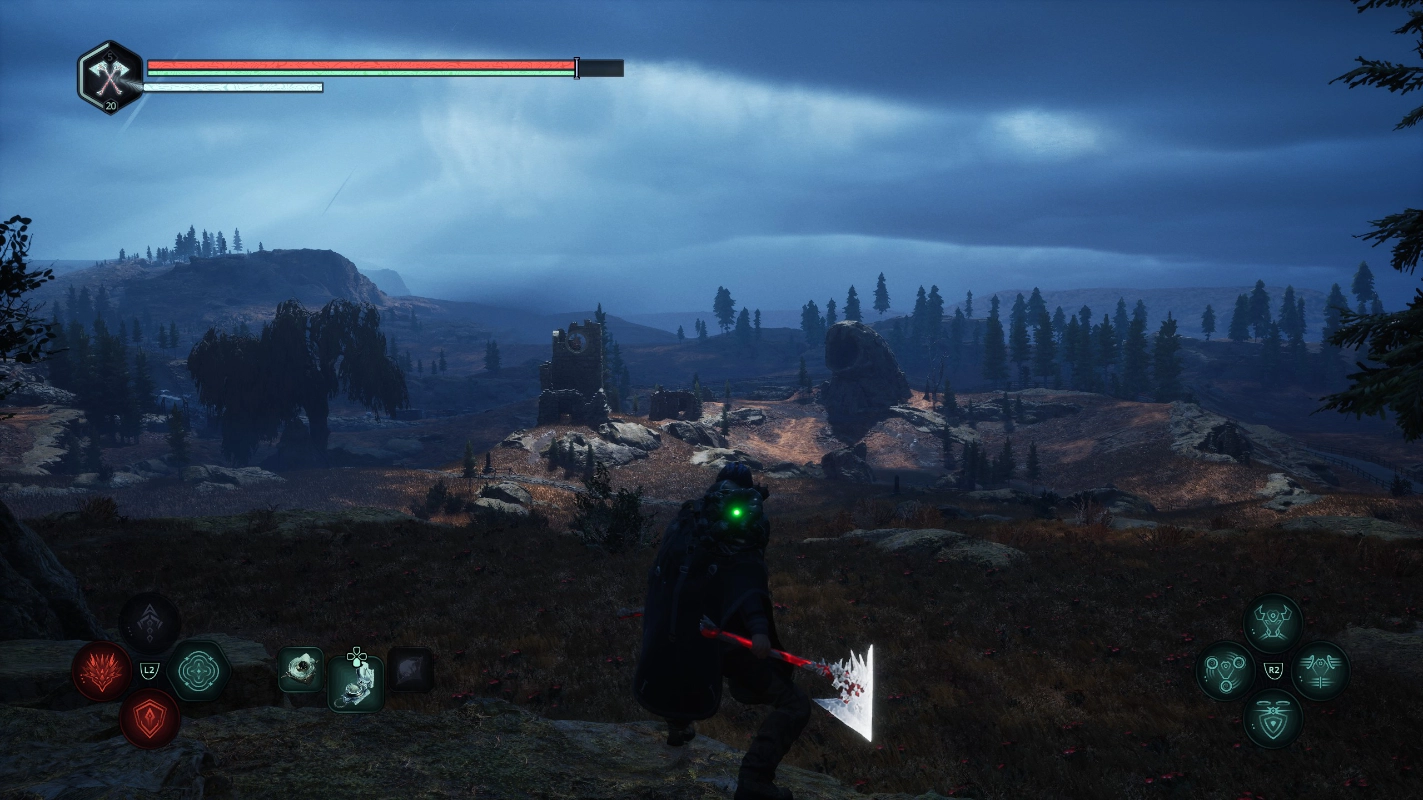
The characters also do a good job of keeping the tone grounded, for the most part. Most of the NPCs you encounter are very much living in the gritty setting, and their dialogue reflects as such. The only weak spot is Remi who can’t help but engage in some sarcastic quipping at point, to mixed results. Still, the writers had enough restraint to keep Remi from being a complete marvel quip-fest, so he was never too distracting.
And briefly, I do want to mention two more things I liked about Hell is Us. First, the price tag of $49.99. While it’s not dirt cheap, it is appreciated given gamers are staring down the barrel of $79.99 games (or worse). In terms of pure playtime to price, you could do a lot worse. Second, the install size. It seems there are still a few devs who try to optimize their games, as Rogue Factor only asked for 20 GB of my hard drive. Again, it may seem minor, but I think it shows a level of care for the player that, frankly, some studios don’t have these days.
A Hell of a First Game
Rogue Factor has two previous games under their belt, both of them Warhammer tie-ins. Hell is Us is their first big statement as a game studio and a wholly original IP. Despite my misgivings with the combat, a lot of consideration went into the exploration and atmosphere, and I walked away mostly satisfied. With soulslikes being an easy genre to exploit, a lot of effort needs to go into standing out. Hell is Us isn’t a cynical cash-in on the format; Rogue Factor put sincere effort into making something thoughtful with its own identity.
Verdict: If you like exploration games with heavy atmosphere, easy to approach combat, and the grounded, grim setting, give Hell is Us a shot. If you want more of a challenge, switch to the higher difficulty. With some blemishes, Hell is Us is does a good job of breaking the soulslike mold. It’s worth paying attention to what Rogue Factor does next, and I hope they can survive the Silksong apocalypse.
For more coverage and reviews, check back regularly with our Other Games section.
